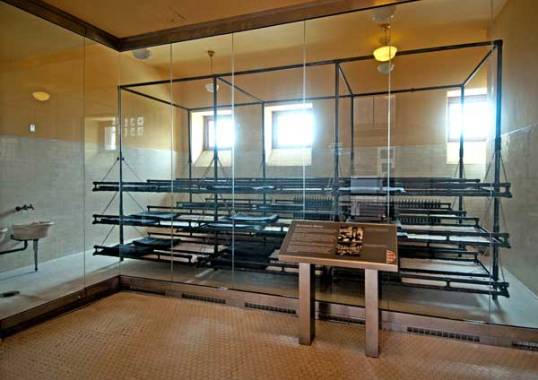I have written about my great-grandmother Concetta Abbate Fiandaca before. Recently, while looking at her Ellis Island immigration record, I discovered something new when I searched the www.libertyellisfoundation.org website for her name.
In 1911, now a widow, Concetta came to America at age 53. She sailed from Naples aboard the Cedric, leaving on March 16 and arriving March 29. She is traveling to DuQuoin, IL with her 9 year old grand daughter, Maria Brunco. Concetta also traveled with Angelo Notarrigo and Giacomo Cianciana (or Cianciania) from her home town, Villarosa. Angelo and Giacomo’s final destination was also DuQuoin, IL.
Concetta, Maria and Giacomo can also be found on a Records of Aliens Held for Special Inquiry page after they arrived at Ellis Island.

The three were held together and questioned together. The Primary Immigrant Inspector in the Great Hall held the immigrant for Secondary Inspection. Immigrant Inspectors usually annotated the manifest to show that the immigrant was referred for a hearing. The trio’s annotation was LPC. The most common exclusion was LPC or Likely Public Charge, taken from the section of law which excludes anyone who might become a burden on the public. In general, women and minors were not permitted to travel alone unless someone was expecting them. Women and children were detained until their safety after they left Ellis Island was assured. A telegram, letter, or prepaid ticket from waiting relatives was usually required before the detained women and children could be sent on their way. At the initial hearing, most immigrants were admitted after explaining their situation or producing a recent letter from a friend or relative at their destination. Others might not have the proof with them, so they would wait until someone came to testify in their behalf or sent a telegram. Under the left columns for Actions for the Boards of Inquiry, the trio has a notation as an immigrant found excludable and deportable. The date listed is April 2, which means Concetta, Maria and Giacomo had to stay at Ellis Island while their fate was decided. In the right columns are notations for immigrants admitted to the country by the Board. Three Inspectors sitting on a Board of Special Inquiry would question the immigrant further and decide whether to admit the immigrant or not. Later, the annotation might be “stamped” to show the outcome of the hearing.
Ellis Island’s numerous dormitories were filled to capacity nearly every night with immigrants who were being temporarily detained. Many immigrants stayed in large dormitory rooms located along the balconies. The dormitories consisted of two long, narrow rooms, one on either side of the balcony. Each room accommodated about 300 detainees, who slept in triple-tiered bunk beds that could be raised, thus converting the dormitory into a daytime waiting area. At night, immigrants received blankets to spread over their canvas or wire-mesh mattresses.

I can’t imagine how frightening it must have been for Concetta and little Maria to be stuck at Ellis Island awaiting their fate.
Concetta, Maria and Giacomo were finally allowed to enter the country on April 8 and were not deported. Columns at the far right of the BSI list are entitled Meals, and show the number of breakfasts, lunches, and dinners served to detainees during their stay. After holding the trio for ten days in detention, the BSI list record shows the Government would be charging the steamship line for 30 breakfasts, 30 lunches, and 30 dinners.
More and more Ellis Island records have been indexed. It may be worthwhile to search for ancestors again to see if you can find any additional immigration records. Buona fortuna!
Posted in
Ellis Island,
family,
family history,
family tree,
genealogy,
Italian genealogy and tagged
#italian,
family,
genealogy,
Italy,
life,
research




 The Family Search website also updated the indexing the Italia, Caltanissetta, Stato Civile (Archivio Di Stato), 1820-1935. The original images are only available for viewing at the Family History Centers, but the indexed information still gives a wealth of information.
The Family Search website also updated the indexing the Italia, Caltanissetta, Stato Civile (Archivio Di Stato), 1820-1935. The original images are only available for viewing at the Family History Centers, but the indexed information still gives a wealth of information.
You must be logged in to post a comment.